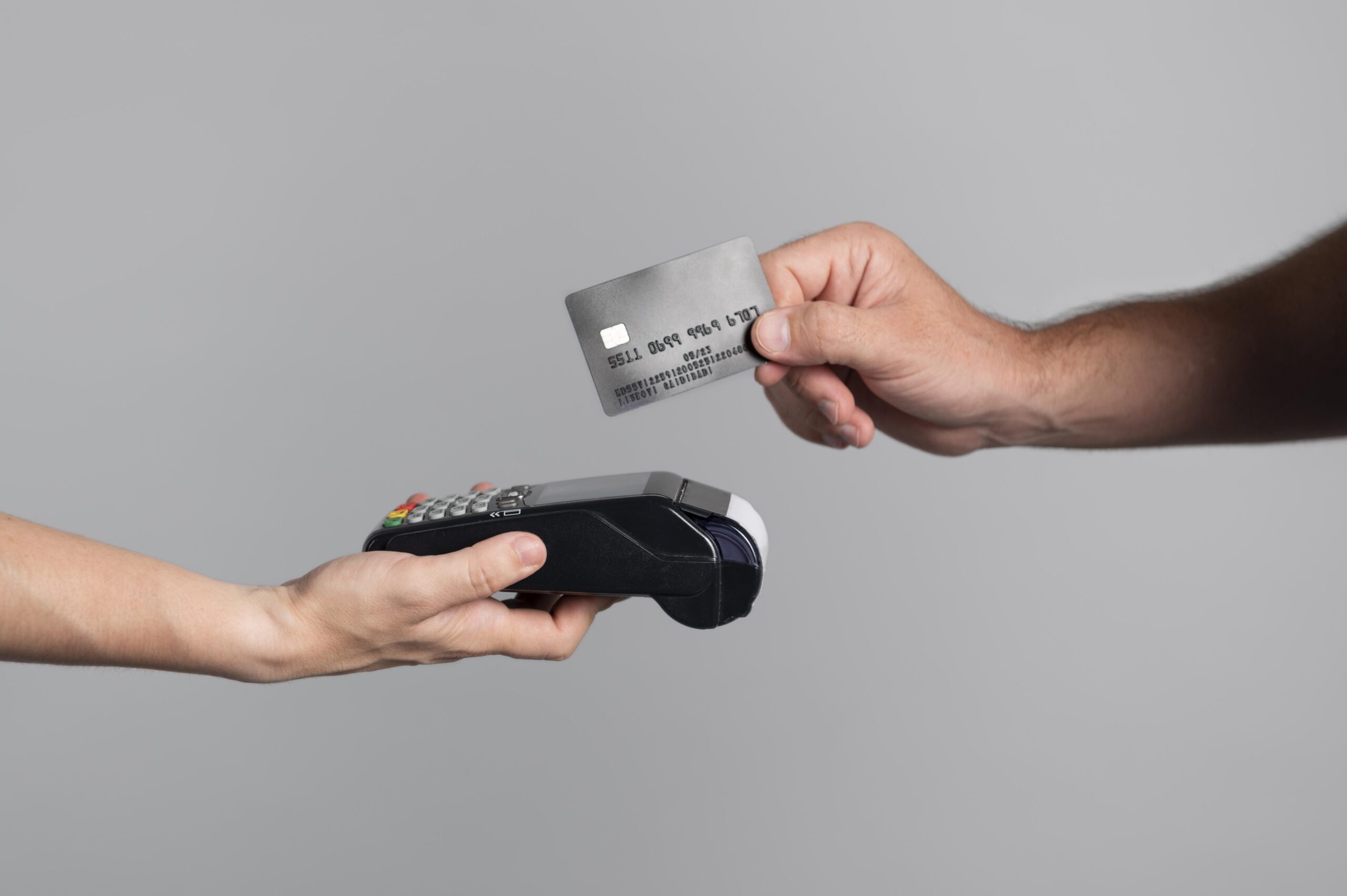Understanding NFC Card Design Updates
When you’ve invested in NFC business cards or promotional materials, discovering that you need to update the design can feel like a significant setback. However, the reality is that updating NFC card designs after printing is not only possible but often necessary as businesses evolve, contact information changes, or branding requirements shift. The approach you take will depend on several factors including the type of changes needed, your budget constraints, and the timeframe for implementation.
The first crucial distinction to understand is the difference between physical design elements and digital content stored on the NFC chip. Physical design refers to the printed graphics, colors, text, logos, and overall visual appearance of the card itself. This includes elements like company logos, background designs, typography choices, color schemes, and any printed contact information. Digital content, on the other hand, encompasses the information stored on the NFC chip that users access when they tap the card with their smartphones.
Many people initially assume that once an NFC card is printed, the entire design is permanently fixed. This misconception can lead to unnecessary stress and premature disposal of perfectly functional cards. While certain aspects of the design are indeed permanent once printed, there are numerous strategies and solutions available for updating both the physical appearance and digital functionality of your NFC cards.
The key to successful NFC card design updates lies in understanding which elements can be modified and which require complete replacement. This knowledge will help you make informed decisions about the most cost-effective and efficient approach for your specific situation.
Physical Design vs Digital Content Updates
Understanding the fundamental difference between physical and digital updates is essential for making informed decisions about your NFC card modifications. Physical design updates involve changes to the tangible, printed elements of the card. These modifications typically require either complete card replacement or the application of additional materials to alter the card’s appearance.
Digital content updates, conversely, involve modifying the information stored on the NFC chip embedded within the card. This type of update is generally more straightforward and cost-effective since it doesn’t require any physical changes to the card itself. The digital content can include contact information, website links, social media profiles, portfolio links, video introductions, or any other digital assets you want to share when someone taps your card.
The beauty of digital content updates lies in their flexibility and immediacy. You can modify the information stored on your NFC chip as frequently as needed without any additional printing costs. This capability makes NFC cards particularly valuable for businesses that frequently update their information or for individuals who want to keep their contact details current.
Physical design updates present more challenges but are not impossible. The approach you choose will depend on the extent of the changes needed and your available resources. Minor physical modifications might be achievable through creative solutions, while major design overhauls typically require professional intervention or complete card replacement.
When planning your NFC card strategy, it’s wise to consider the likelihood of future updates and design your initial cards with flexibility in mind. This forward-thinking approach can save significant time and money in the long run.
Methods for Updating Physical Card Appearance
Updating the physical appearance of printed NFC cards requires creativity and sometimes professional assistance. Several methods exist for modifying the visual elements of your cards, each with its own advantages and limitations.
One of the most straightforward approaches for minor updates involves the use of high-quality stickers or labels. This method works particularly well for covering outdated information or adding new elements to the existing design. Professional-grade vinyl stickers can be custom printed to match your updated branding requirements and applied precisely over specific areas of the card. The key to success with this approach lies in using materials that complement the card’s existing texture and ensuring proper alignment during application.
Another effective method involves the use of transparent overlays or lamination films. These materials can be printed with updated design elements and applied over the entire card surface. This approach is particularly useful when you need to make comprehensive changes to the card’s appearance while preserving the underlying NFC functionality. The overlay method also provides additional protection to the original card, potentially extending its lifespan.
For more extensive modifications, professional card refinishing services offer comprehensive solutions. These services typically involve removing the existing print layer and applying a completely new design. While this approach is more expensive than DIY solutions, it provides professional-quality results that are virtually indistinguishable from newly printed cards.
Laser engraving represents another option for certain types of design updates. This method is particularly effective for adding new text elements, logos, or decorative patterns to cards with appropriate surface materials. Laser engraving creates permanent modifications that are highly durable and professional in appearance.
Heat transfer vinyl application offers another avenue for physical updates. This method involves cutting vinyl designs and applying them to the card surface using heat and pressure. The technique works well for adding colorful design elements, text, or simple graphics to existing cards.
Digital Content Updates and Management
Managing and updating the digital content stored on your NFC cards is typically the most flexible and cost-effective aspect of card customization. The process involves modifying the information that users access when they tap your card with NFC-enabled devices.
Most NFC cards utilize programmable chips that can be updated using smartphone apps or computer software. The specific method depends on the type of chip used in your cards and the platform or service you’re using to manage the digital content. Many modern NFC business card solutions provide user-friendly web interfaces that allow you to update your information instantly from any internet-connected device.
The digital content update process typically begins with accessing your account on the platform associated with your NFC cards. From there, you can modify various elements including contact information, social media links, website URLs, professional portfolios, introduction videos, and other digital assets. Changes are usually reflected immediately, meaning anyone who taps your card after the update will see the new information.
One significant advantage of digital updates is the ability to track engagement and analytics. Many NFC platforms provide detailed insights into how often your card is tapped, which information is accessed most frequently, and demographic data about your contacts. This information can be invaluable for refining your networking strategy and optimizing your digital presence.
Advanced NFC management platforms offer sophisticated features such as conditional content display, time-based information updates, and integration with customer relationship management systems. These capabilities allow for highly personalized and dynamic user experiences that would be impossible with traditional printed business cards.
When updating digital content, it’s important to maintain consistency with your overall brand message while ensuring that all information remains current and accurate. Regular audits of your digital content help maintain professionalism and ensure that contacts always receive the most relevant information.
Professional Design Update Services
Professional design update services provide comprehensive solutions for businesses and individuals who need extensive modifications to their NFC cards. These services typically offer expertise in both physical design updates and digital content optimization, ensuring cohesive and professional results.
Working with professional services begins with a consultation to assess your current cards and understand your update requirements. Experienced providers can evaluate the feasibility of various update approaches and recommend the most cost-effective solutions for your specific situation. This expertise is particularly valuable when dealing with complex design requirements or when working with large quantities of cards.
Professional services often have access to specialized equipment and materials that may not be available to individual consumers. This access enables them to achieve results that would be difficult or impossible to replicate using DIY methods. For example, professional-grade printing equipment can produce color-matched overlays that seamlessly integrate with existing card designs.
Many professional providers offer comprehensive packages that include design consultation, material sourcing, production, and quality assurance. These packages can be particularly cost-effective for businesses updating large quantities of cards or those requiring complex modifications.
When selecting a professional service provider, it’s important to evaluate their experience with NFC technology and understanding of the unique requirements associated with these cards. The provider should demonstrate knowledge of how physical modifications might affect NFC functionality and take appropriate measures to preserve chip performance.
Quality assurance is another crucial consideration when working with professional services. Reputable providers should offer samples or prototypes before proceeding with full production, allowing you to evaluate the proposed updates and make any necessary adjustments.
DIY Solutions for Minor Design Changes
For individuals and small businesses with limited budgets, do-it-yourself solutions can provide effective options for minor NFC card design updates. These approaches require some creativity and patience but can achieve surprisingly professional results when executed properly.
The foundation of successful DIY updates lies in careful planning and preparation. Before beginning any modification work, it’s essential to create detailed templates and practice the proposed techniques on sample materials. This preparation helps ensure consistent results and minimizes the risk of damaging your actual NFC cards.
High-quality printing equipment is crucial for DIY success. While professional-grade printers are ideal, many consumer-level printers can produce acceptable results when used with appropriate paper and ink selections. The key is understanding the limitations of your equipment and designing updates that work within those constraints.
Material selection plays a critical role in DIY update projects. Adhesive materials must be compatible with the card surface and provide adequate durability for regular handling. It’s worth investing in premium materials rather than compromising on quality to save a few dollars.
Precision cutting tools are essential for achieving clean, professional-looking results. Craft knives, cutting mats, and rulers help ensure accurate cuts and proper alignment. For more complex shapes, consider investing in a cutting machine that can create precise patterns and designs.
Temperature and humidity control during the application process can significantly impact the final results. Working in a controlled environment helps ensure proper adhesion and prevents material warping or bubbling.
Cost Considerations and Budget Planning
Understanding the financial implications of NFC card design updates is crucial for making informed decisions about the most appropriate approach for your situation. The costs can vary significantly depending on the scope of updates required, the methods chosen, and whether you opt for professional services or DIY solutions.
Digital content updates typically represent the most cost-effective option for keeping your NFC cards current. Most platforms charge minimal fees for content modifications, and some services include unlimited updates as part of their subscription packages. This approach provides excellent value for businesses that frequently update their information or want to maintain dynamic, current content.
Physical design updates involve more complex cost considerations. DIY approaches generally offer the lowest upfront costs but require time investment and may produce variable results depending on your skill level and available tools. Material costs for DIY projects typically range from minimal for simple sticker applications to moderate for more comprehensive overlay solutions.
Professional services command higher fees but provide guaranteed results and often include warranties or quality assurances. The cost of professional updates varies based on the complexity of the modifications, the quantity of cards being updated, and the specific services required. Many providers offer volume discounts for larger orders, making professional services more cost-effective for businesses updating substantial quantities of cards.
When evaluating costs, it’s important to consider the total cost of ownership rather than just the immediate update expenses. Factors such as durability, professional appearance, and the potential need for future modifications should all be included in your financial analysis.
Budget planning for NFC card updates should also account for potential future needs. Investing in slightly more expensive solutions that offer greater flexibility or durability may prove more economical in the long run, particularly for businesses that anticipate regular updates.
Best Practices for Future-Proof NFC Cards
Implementing forward-thinking strategies when initially designing and ordering NFC cards can significantly reduce the complexity and cost of future updates. These best practices help ensure that your cards remain functional and professional-looking even as your needs evolve.
Design flexibility should be a primary consideration from the outset. Creating card designs with modular elements or designated update areas can facilitate future modifications. For example, leaving specific zones for contact information or using design elements that can accommodate stickers or overlays without compromising the overall aesthetic.
Choosing high-quality base materials for your initial cards provides a better foundation for future updates. Premium card stocks and finishes not only create better first impressions but also withstand modification processes more effectively. The investment in quality materials often pays dividends when updates become necessary.
Digital-first design strategies prioritize the digital content experience while minimizing printed information that may become outdated. This approach involves printing primarily brand elements and design graphics while storing variable information like contact details, job titles, and specific offers in the digital content accessible through the NFC chip.
Vendor selection plays a crucial role in future flexibility. Working with NFC providers that offer robust content management platforms and regular feature updates ensures that your digital capabilities can grow with your needs. Additionally, providers that offer physical card update services or work with trusted partners can streamline future modification projects.
Documentation and asset management are often overlooked but critically important aspects of future-proofing your NFC cards. Maintaining organized records of design files, color specifications, material selections, and vendor information facilitates smooth update processes when they become necessary.
Common Mistakes to Avoid
Learning from the mistakes of others can save significant time, money, and frustration when updating NFC card designs. Several common pitfalls can derail update projects or result in suboptimal outcomes.
One frequent mistake involves attempting physical modifications without proper testing and preparation. Rushing into update projects without understanding material compatibility, adhesion requirements, or the impact on NFC functionality can result in damaged cards or poor-quality results. Always test proposed modifications on sample cards or less critical inventory before proceeding with important cards.
Ignoring brand consistency during updates represents another common error. While updates provide opportunities to refresh your card’s appearance, maintaining consistency with your overall brand identity is crucial for professional credibility. Ensure that updated elements align with your brand guidelines and complement existing design elements rather than creating jarring contrasts.
Overlooking the user experience when updating digital content can significantly reduce the effectiveness of your NFC cards. Simply updating information without considering how users interact with the content can result in confusing or frustrating experiences. Always test updated digital content from the user’s perspective to ensure intuitive navigation and clear information presentation.
Inadequate quality control during the update process can lead to inconsistent results across multiple cards. Whether working on DIY projects or managing professional services, implementing systematic quality checks helps ensure that all updated cards meet your standards and function properly.
Failing to backup digital content before making updates represents a potentially costly oversight. While most platforms provide revision history or backup capabilities, manually documenting your current configuration before making changes provides additional security and enables quick recovery if problems arise.
Case Studies and Real-World Examples
Examining real-world examples of successful NFC card design updates provides valuable insights into effective strategies and potential challenges. These case studies demonstrate how different approaches can achieve specific objectives while highlighting the importance of proper planning and execution.
A technology startup discovered that their initial NFC cards contained outdated job titles and contact information just six months after printing. Rather than ordering entirely new cards, they implemented a hybrid update strategy. They used high-quality vinyl stickers to cover the outdated printed information and simultaneously updated their digital content to reflect current details. This approach cost approximately 60% less than ordering new cards while maintaining professional appearance standards.
A real estate agency faced a different challenge when their branding underwent a complete refresh, including new colors, logo design, and messaging. The extensive nature of the changes made partial updates impractical, so they opted for professional card refinishing services. The provider removed the existing print layer and applied completely new designs while preserving the NFC functionality. Although more expensive than minor updates, this approach proved more cost-effective than purchasing entirely new cards with new NFC chips.
A freelance consultant discovered the power of digital content updates when their service offerings expanded significantly. Rather than trying to accommodate all the new information on the physical card, they redesigned their digital content to include a comprehensive services menu, portfolio links, and scheduling integration. This approach actually improved the user experience while eliminating the need for any physical card modifications.
A small manufacturing company used laser engraving to add new certifications and awards to their existing NFC cards. The engraving process allowed them to incorporate these achievements directly into the card design without compromising the existing layout or requiring overlay materials. The permanent nature of laser engraving also ensured that the updates would remain professional-looking over time.
These examples demonstrate that successful NFC card updates require careful evaluation of the specific changes needed and selection of appropriate modification techniques. The most effective solutions often combine multiple approaches to achieve optimal results within budget constraints.
Frequently Asked Questions
Q: Can I update my NFC card design without affecting the chip functionality?
A: Yes, in most cases you can update the physical design of your NFC card without affecting the chip functionality. The NFC chip is typically embedded within the card layers and is not directly impacted by surface modifications like stickers, overlays, or laser engraving. However, you should avoid applying excessive heat or pressure directly over the chip area, and be cautious with metallic materials that might interfere with the chip’s radio frequency transmission.
Q: How often can I update the digital content on my NFC card?
A: The frequency of digital content updates depends on your NFC platform provider and subscription plan. Many services offer unlimited updates as part of their standard packages, allowing you to modify your digital content as often as needed. Some basic plans may have restrictions on update frequency, so it’s important to check with your provider about any limitations.
Q: What’s the most cost-effective way to update outdated contact information on printed NFC cards?
A: For contact information updates, the most cost-effective approach is typically updating the digital content stored on the NFC chip rather than modifying the physical card. This allows you to keep all contact information current without any additional printing costs. If the information is printed on the card and must be changed, high-quality stickers or labels represent the most economical physical update option.
Q: Can I change the color scheme of my NFC cards after printing?
A: Significant color scheme changes typically require professional services or complete card replacement. However, minor color adjustments or additions can sometimes be achieved through careful use of overlays or vinyl applications. The success of color modifications depends on the existing design and the specific changes desired.
Q: How long do NFC card design updates typically last?
A: The durability of design updates varies significantly based on the materials and methods used. Professional updates and high-quality materials can last as long as the original card, while DIY solutions using basic materials may need replacement sooner. Digital content updates are permanent until you choose to modify them again.
Q: Will updating my NFC card design void any warranties?
A: Physical modifications to your NFC cards may void warranties provided by the original manufacturer or vendor. It’s important to check warranty terms before proceeding with any updates. Digital content updates typically do not affect hardware warranties since they don’t involve physical modifications to the card.
Q: Can I update NFC cards that were printed by a different company?
A: Physical updates can generally be performed on NFC cards regardless of the original manufacturer. However, digital content updates may be limited by the platform or service associated with the original cards. Some NFC systems are proprietary and only allow updates through the original provider’s platform.
Q: What should I do if my updated NFC card stops working properly?
A: If your Digital Business Cards stops functioning after updates, first check whether the issue is with the physical chip or the digital content. Try accessing the card with different devices to isolate the problem. If physical modifications may have damaged the chip, you may need professional evaluation or card replacement. Digital content issues can usually be resolved by checking your platform settings or contacting customer support.
Q: How can I test my updated NFC cards before distributing them?
A: Always test updated cards with multiple NFC-enabled devices to ensure consistent functionality. Check both the physical appearance and digital content accessibility. For professional or business use, consider testing with colleagues or trusted contacts to get feedback on the user experience before broader distribution.
Q: Are there any legal considerations when updating NFC card designs?
A: Ensure that any updated designs comply with trademark and copyright requirements, particularly when using logos or branded elements. If your cards include professional credentials or certifications, make sure all information remains accurate and current. For business cards, verify that updated contact information and job titles are correct and authorized by your organization.






